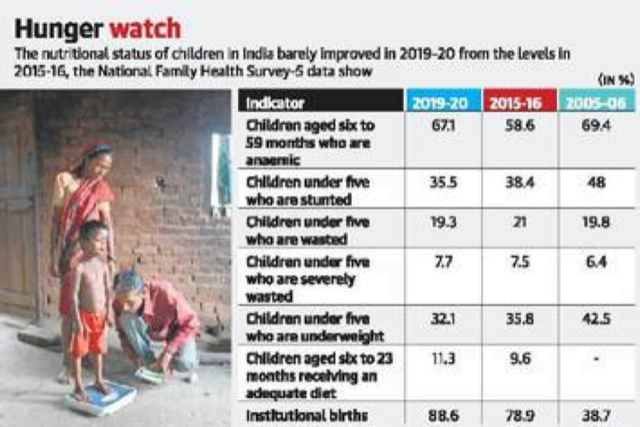UPSC Articles
National Family Health Survey (NFHS) 5
Part of: Prelims and GS-II – Health
Context National Family Health Survey (NFHS) 5 was recently released.
- It has captured population health indicators in 2017-19.
Key findings of the survey
- Institutional births: Births in institutional facilities, such as a hospital, improved by nearly 8 percentage points.
- Stunted growth: Stunted Children or showing signs of wasting only dropped by a maximum of 3 percentage points.
- Total Fertility Rate (TFR): It has reduced to 2.0 from 2.2 (NFHS-4).
- According to the United Nations Population Division, a TFR of about 2.1 children per woman is called replacement-level fertility.
- If this fertility is sustained over a sufficiently long period, each generation will exactly replace itself.
- Contraceptives: Use of contraceptives improved from 53.5% to 66.7%
- Sterilisation: An increase in female sterilisation. Continued stagnation in male sterilisation uptake.
- It shows that the onus of family planning still lies with women.
- Full vaccination: Fully vaccinated Proportion of children (12-23 months) improved from 62%-76%.
-
- Exclusive breastfeeding: Improvement In Children under six months who were exclusively breastfed from 54.9% to 63.7%.
- Nutritional gains: Minimal improvement in children.
-
- Gains in women and men (15-49) with below normal BMI dropped roughly four percentage points.
- Those with higher BMI than normal increased by around 4 percentage points.
- Abnormal BMIs are linked to an increase in obesity and other non-communicable diseases (NCD)
- Anaemia: The proportion of anaemic children (6-59 months) increased from 58% to 67%.
- Anaemic Women (15-49 years) increased from 53% to 57%.
- Anaemic Men of the same age increased from 29% to 31%.















